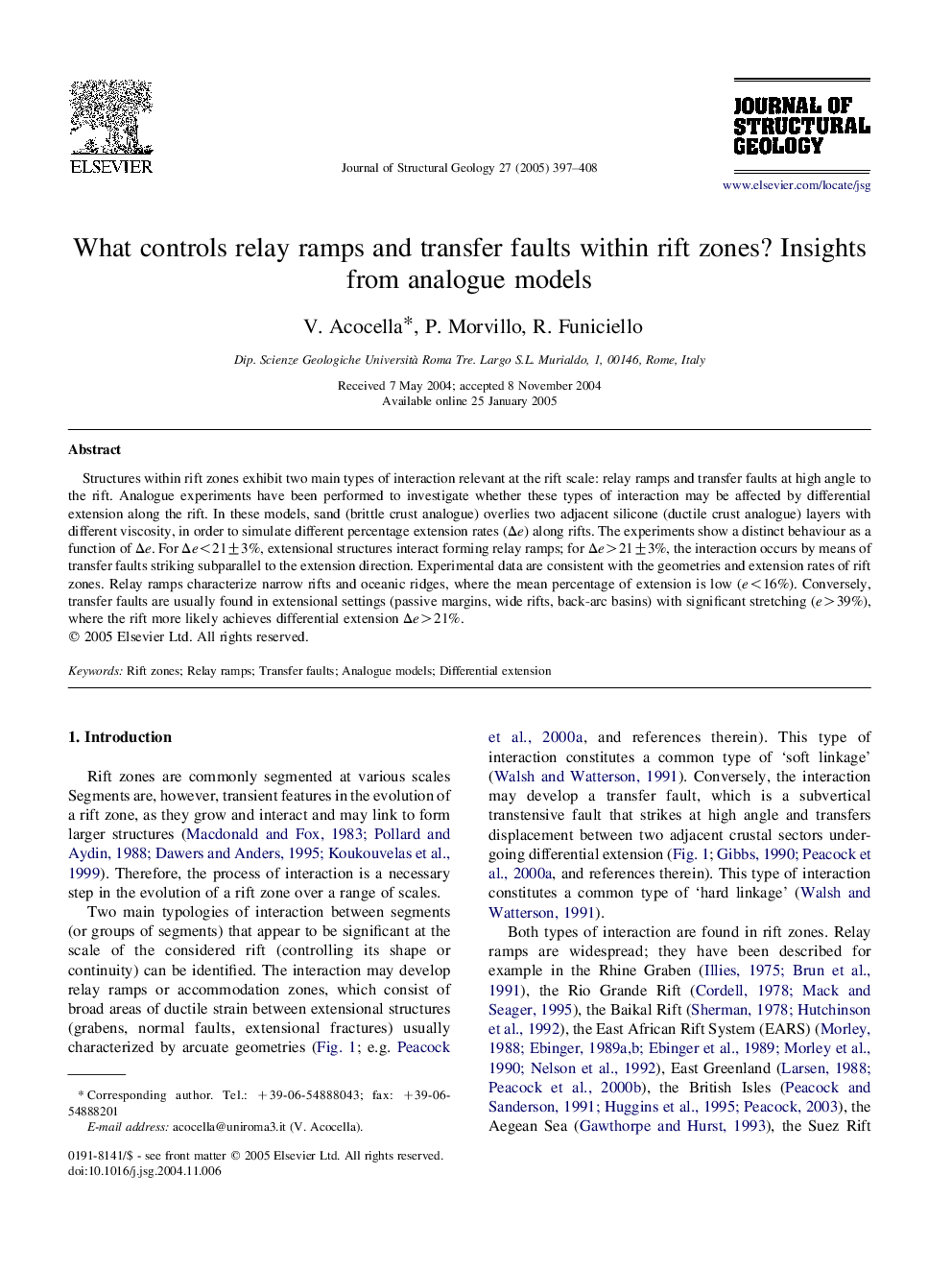| Article ID | Journal | Published Year | Pages | File Type |
|---|---|---|---|---|
| 9536608 | Journal of Structural Geology | 2005 | 12 Pages |
Abstract
Structures within rift zones exhibit two main types of interaction relevant at the rift scale: relay ramps and transfer faults at high angle to the rift. Analogue experiments have been performed to investigate whether these types of interaction may be affected by differential extension along the rift. In these models, sand (brittle crust analogue) overlies two adjacent silicone (ductile crust analogue) layers with different viscosity, in order to simulate different percentage extension rates (Îe) along rifts. The experiments show a distinct behaviour as a function of Îe. For Îe<21±3%, extensional structures interact forming relay ramps; for Îe>21±3%, the interaction occurs by means of transfer faults striking subparallel to the extension direction. Experimental data are consistent with the geometries and extension rates of rift zones. Relay ramps characterize narrow rifts and oceanic ridges, where the mean percentage of extension is low (e<16%). Conversely, transfer faults are usually found in extensional settings (passive margins, wide rifts, back-arc basins) with significant stretching (e>39%), where the rift more likely achieves differential extension Îe>21%.
Related Topics
Physical Sciences and Engineering
Earth and Planetary Sciences
Geology
Authors
V. Acocella, P. Morvillo, R. Funiciello,
